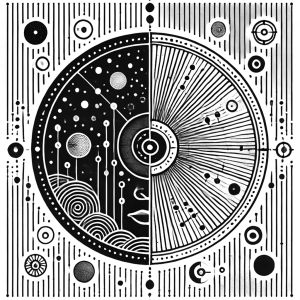InnerMotion – The Guidebook – Sight

Dancing with your eyes open or closed can profoundly affect your experience, perception, and connection to the body, music and environment, whether you're in a club, at a festival, in a crowded space, or alone. Each approach has its unique benefits and drawbacks.
Dancing with Eyes Open
Pros
- Spatial Awareness: Keeping your eyes open allows you to be aware of your surroundings, helping you navigate crowded spaces safely and avoid collisions with other dancers.
- Visual Connection: Eye contact and visual cues can significantly enhance interaction with other dancers, creating a shared experience and sometimes leading to improvised, synchronized movements.
- Inspirational Visuals: Especially in clubs and festivals, visual elements like lighting, stage setups, and performer actions contribute to the overall sensory experience and can inspire your dance movements.
Cons
- Distractions: Visual stimuli can sometimes be overwhelming, pulling your focus away from your bodily sensations and the music.
- Self-Consciousness: Seeing other people watching might make you self-conscious, potentially inhibiting your natural movement and expression.
Dancing with Eyes Closed
Pros
- Enhanced Internal Focus: Closing your eyes can help you turn inward, heightening your other senses and deepening your connection to the body and music.
- Emotional Depth: Without visual distractions, you might find it easier to tap into your emotions and express them more freely through dance.
- Creativity and Imagination: With your eyes closed, your imagination can take over, leading to more creative and personal dance expressions as you're less influenced by external stimuli.
Cons
- Reduced Spatial Awareness: Not being able to see your surroundings can make it difficult to navigate space, especially in crowded settings, increasing the risk of bumping into others or tripping over obstacles.
- Isolation: You might miss out on non-verbal communication and shared moments with other dancers, potentially feeling isolated from the group experience.
Balancing the Two Approaches
Choosing whether to keep your eyes open or closed while dancing can depend on several factors, including your comfort level, the density of the crowd, and your familiarity with the environment. Here are some exercises to balance both approaches:
- Switch Between: Start with your eyes open to get a sense of the space and people around you. Once comfortable, try closing your eyes briefly to focus inwardly.
- Partially Close Eyes: Softening your gaze or lowering your eyelids can be a middle ground, allowing some visual input without full distraction.
- Set Boundaries: If dancing with eyes closed, choose a spot that feels less congested or use barriers like back walls to avoid wandering too far.
Whether you choose to dance with your eyes open or closed, both approaches offer unique ways to connect with the music and express yourself. Consider the environment, your safety, and how you feel most connected to the dance when deciding. Experimenting with both can enhance your dance experience, allowing you to enjoy the best of both worlds.